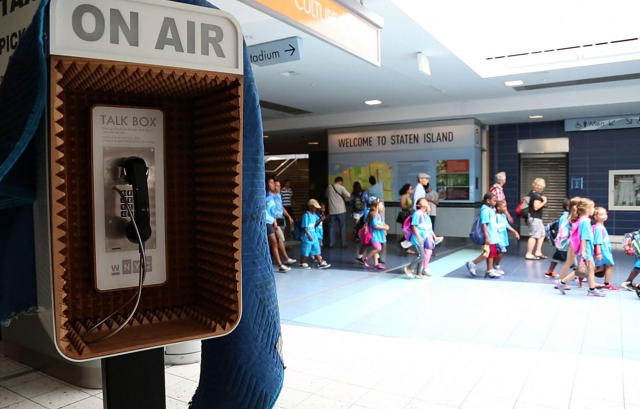How Revamping Payphones may Put A test On Police Brutality
On the anniversary of Eric Garner’s loss of life, WNYC and store Architects flip a payphone into an on-the-ground reporting software.
July 17, 2015
On Staten Island, you might see people speaking right into a kitted-out pay phone, but you is not going to hear an bizarre dialog. it is a part of NY city’s public radio station WNYC‘s new on-the-ground reporting tool, the TalkBox. Its inaugural post coincides with death of Eric Garner, a Staten Island resident who was once killed in police custody one year ago these days.
Designed in collaboration with shop Architects, the TalkBox encourages individuals to candidly share their reactions to news tales and local matters which have escalated into nationwide conversations. working example: the issues of race, discrimination, and police brutality that Garner’s demise magnified. the theory is to make use of this device as a 24-hour, on-the-floor reporting tool to assemble intel from underrepresented communities and give them a voice.
“we can’t have journalists out at all times,” Paula Szuchman, WNYC’s vp of digital, says. “A pay cellphone feels iconic and is quickly to be extinct in New York city. We’re used to seeing them all the time, and we thought, what if it could be a direct connection to the newsroom?”
The telephone is portable and connects to WNYC’s Google Voice account. As quickly as callers pick up the receiver, they’re greeted with a recorded query from some of the radio station’s journalists. The prompt asks individuals about what Garner’s loss of life manner to them. On July 17, 2014 Eric Garner was arrested on Staten Island for allegedly selling cigarettes illegally. He argued with law enforcement officials about feeling unduly centered, which was captured on movie via a bystander. Officers tackled him and placed him in a chokehold—a deadly move that used to be banned 20 years ago. Garner was once later pronounced lifeless.
On June 15, of this yr, the first day the phone used to be put in, 30 individuals left messages. “there may be one thing intimate about any person selecting up an old school landline and now not having a microphone in their face,” she says. “It takes away a barrier for those who are reluctant to talk.” The messages individuals have left to this point have confirmed TalkBox’s speculation—supply folks a platform to share their story and they’re going to. you’ll find their recollections and ideas in the video below.

As for the phone’s design: It needed to be acquainted, however completely different enough to spark curiosity and entice passersby. store riffed on the appear of a sound studio and lined the within of the aluminum housing with textured wood that looks like soundproofing foam.
“We like to think about ourselves as urban architects, and we want to take part in the discourse of the city,” Vishaan Chakrabarti, a important at keep, says. The social message behind the project resonated with him. “What we try to in finding out what’s nice in the cities the place we work, and we increase that via structure, subject material, and kinds. We also do it by growing discursive space. when we think of public space, it’s now not frequently as an amenity, it can be ‘Are we growing an area the place a protest can happen?’ Cities and their public spaces—Tiananmen sq., Tahrir sq.—are in reality what drive change in countries as a result of if you are going to stage a protest, you are not going to do it in a corn container.”
while WNYC has no speedy plans to build extra TalkBoxes, the mission has the potential to be scalable and could in concept be put in anywhere within the u . s .. it’s a clever method to recast “obsolete” know-how and infrastructure. If more cities had TalkBoxes, they might have an immediate line into communities that do not receive regular media coverage. If reporters had extra get admission to to these tales and could disseminate more personal debts, think about the possibilities. “In a myth world all pay telephones might be TalkBoxes,” Szuchman says.
nowadays, the TalkBox strikes to every thing Goes e-book Café and neighborhood Stage at 208 Bay street, on Staten island. follow @WNYCTalkBox on Twitter to search out out where it’s going to be.
(116)














